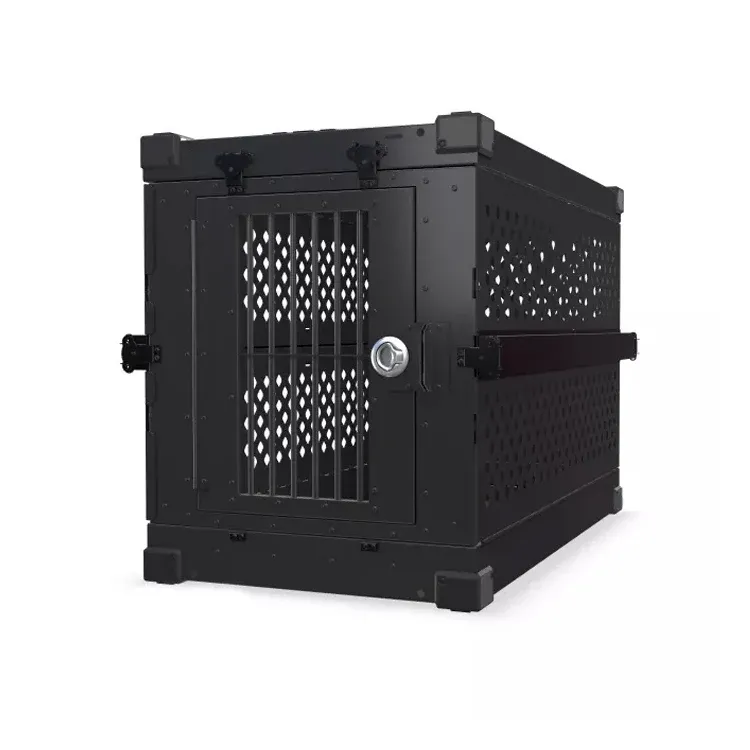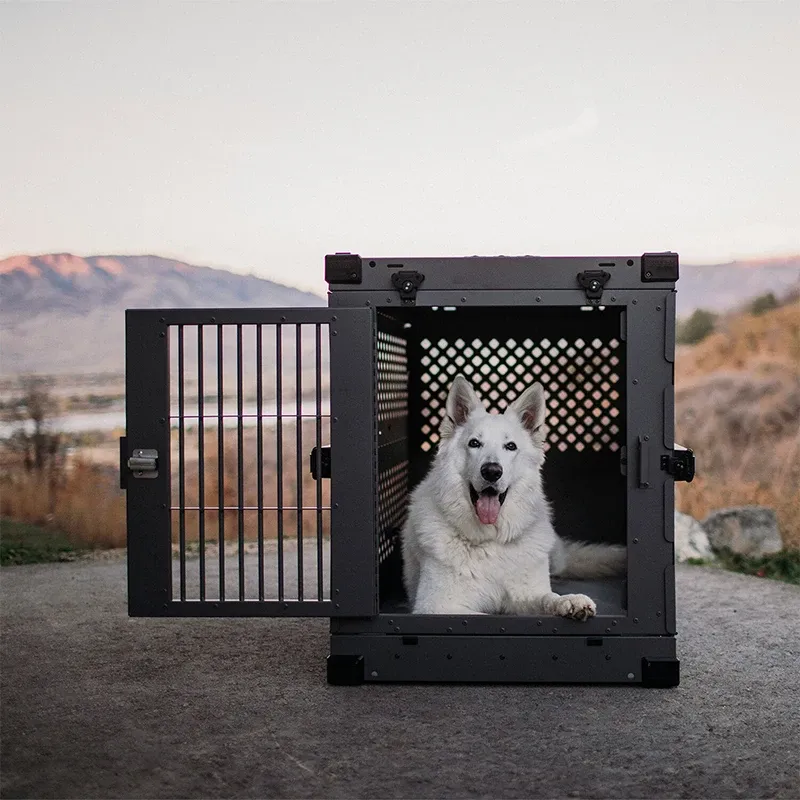





Aluminum XXL Collapsible Dog Crate For Large Dog Rottweiler Kennel Carrier Cage
0
sales
Regular Price
$0.00
Regular Price
Sale Price
$680.00
Congrats! You are eligible for FREE Shipping
United States
Size
24inch*18inch*22inch
30inch*20inch*22inch
34inch*23inch*28inch
40inch*23inch*29inch
48inch*26inch*33inch
Dogs bring immense joy to daily lives, but as any pet owner knows, pet ownership can come with its own challenges. Many dog owners have likely had to deal with some behavioral issues with their pup at one point or another. Among the various different behavioral issues that dogs may display, destructive behavior is one of the most common and frustrating ones. For owners who crate their dogs, it's not uncommon for the dogs to exhibit destructive behavior towards their crates. Before delving into ways that dog owners can stop and prevent their pup’s destructive crate behavior, let's go over some of the signs.
Signs of Destructive Crate Behavior in Dogs
Pawing and Scratching
It’s common for dogs to attempt to escape their crates by pawing or scratching at the door or sides, causing damage to the crate and potentially injuring themselves in the process. While a heavy-duty crate is resilient to superficial damage, poorly built wire or plastic crates might not be able to withstand this behavior.
Escape Attempts
Going beyond simply pawing at the crate, a destructive dog may exhibit more force to attempt to escape the crate. Poorly designed crates may be unable to withstand the force, especially from stronger dog breeds. If a crate withstands one escape attempt, there is a chance that a determined dog will continue to try escaping again.
Crate Accidents
Dogs experiencing high amounts of stress or anxiety may defecate or urinate in their crate. Even potty trained dogs may exhibit this behavior due to intense emotions they are experiencing.
Chewing of Objects
Another sign of destructive crate behavior is the chewing of any objects that may be inside the crate. This includes a crate pad, toys, or a blanket.
What Causes Destructive Crate Behavior?
When dogs start displaying extreme changes in their behavior, including being more destructive, there likely are underlying reasons for this change. Let's analyze some of the most common reasons for destructive crate behavior in dogs.
Lack of Exercise
Dogs require plenty of mental and physical stimulation. If a dog is not receiving enough exercise, and thus has lots of pent up energy, they may become bored and resort to destructive behavior out of frustration.
Separation Anxiety
Anxiety is one of the leading causes of destructive behavior in dogs. Dogs suffering from separation anxiety may be more likely to exhibit destructive behaviors when they are crated due to the stress they experience when they’re away from their owners.
Lack of Crate Training
Dogs who are not crate trained can easily act out when they are crated for long periods of time. If a crate is treated as a punishment for a dog, they may resort to destruction as a form of protest.
Unsuitable Crate Conditions
Problems with the crate itself can be a contributing factor to destructive behavior. Uncomfortable or poorly built crates may enhance a dog’s stress when they are inside of it. Additionally, having a crate that is too small or too large can cause more destructive behavior.
A Guide to Addressing Destructive Crate Habits
Once dog owners know how to identify the signs and underlying causes of destructive crate behavior, the next step is to implement solutions to ensure the happiness and wellbeing of your pups. Let’s look into the best ways to solve a dog’s destructive crate habits.
1. Crate Train Your Dog
Crate training provides many benefits for pups, encouraging dogs to view their crate as a safe space where they can relax and de-stress. A dog that is properly crate trained is unlikely to exhibit destructive behavior, as they are relaxed and comfortable when inside of their crate for any period of time.
2. Exercise Your Pup
Ensure your dog receives plenty of physical exercise to prevent boredom and excess energy. Regular walks, games of fetch, and other physical activities are great ways to eliminate any pent up energy that may cause destructive crate behavior.
3. Create a Comfortable Crate Environment
Many dogs appreciate the den-like environment that a crate provides them. That being said, ensuring that the crate is comfortable will reduce the likelihood of any destructive behavior. Make sure your pup has plenty of room to turn around, and consider adding a crate pad to provide more muscle support.
4. Consult an Expert
A dog’s destructive behavior can be caused by more serious conditions, such as separation anxiety. Additionally, dogs may be acting out as a result of them feeling pain. Thus, if your pup’s destructive behavior persists, it is a good idea to consult your veterinarian for expert advice.
Our #1 Crate Training Tips
Utilize positive reinforcement when crate training your dog.
Have lots of patience. Crate training can be a gradual process, and it is best not to rush it.
Start slow. Introduce your dog to their crate for short periods of time, even leaving the door open to begin with. Slowly, increase the amount of time your pup spends in the crate.
Ensure the crate is a comfortable and soothing environment for your dog.
Be consistent with your crate training, as this will yield the best results.
Never use the crate as a punishment for your dog, as this can cause your pup to start associating negative emotions with their crate.
Invest in the right crate that is designed to suit your dog's temperament and lifestyle.


